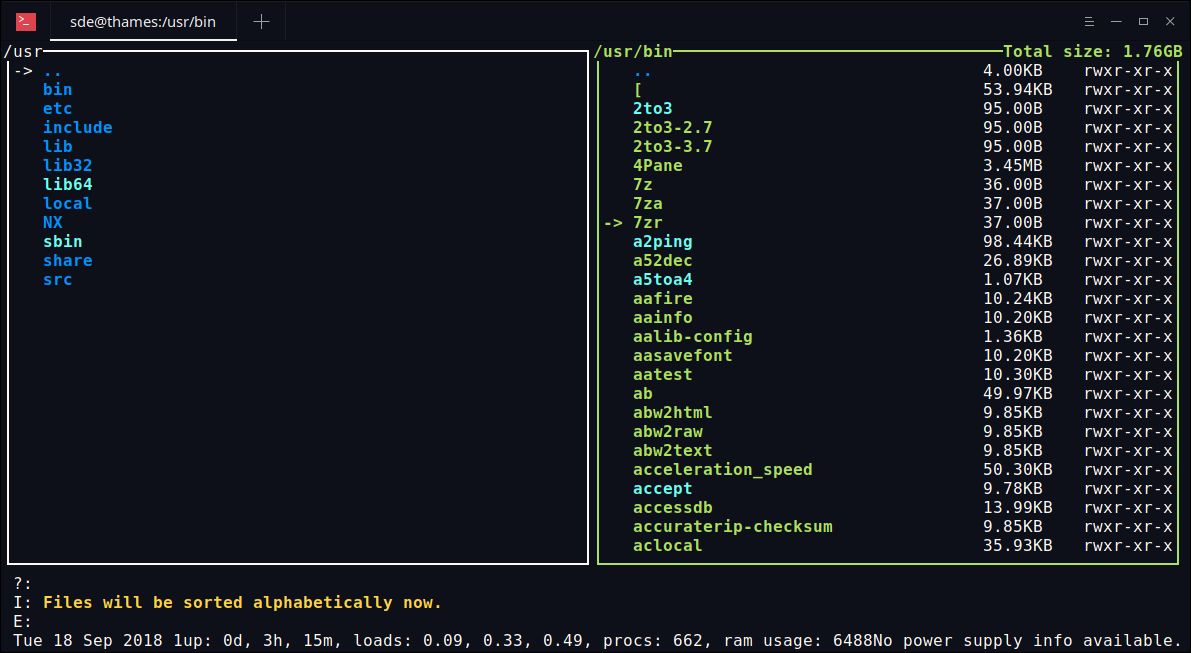
#Thundar file manager archive
I do, however, highly recommend installing the Archive plugin and the Media tags plugin. You won’t find many plugins because most extra features are handled through Custom Actions.
#Thundar file manager install
If you install Thunar from the Ubuntu Software Center, you can click on More Info to find a few plugins available (Figure 2). This isn’t the only way to extend Thunar’s capabilities. Check out Extend Xfce’s Thunar File Manager with Custom Actions for a how-to on creating a number of customized actions for Thunar. I’ve covered the creation/use of Custom Actions in a piece from 2011 which still applies. With Custom Actions you can extend Thunar into one of the single most powerful file managers available. This feature is incredibly powerful and only limited by your imagination and basic Linux skills. Custom Actions are user-defined commands that act upon files/folders from within the Thunar GUI. One of the best features of Thunar is the Custom Actions feature. If you’re looking for a file manager with a bit more flexibility, you need not look much further than the Xfce default tool, Thunar. Once you’ve done that, right-click a blank spot in Files (in the folder you want the new file) and, from within the Templates menu, select the new file type to be created (Figure 1). If you already have a number of template files created, you could just either move or copy them into the ~/Templates folder. Open up your application of choice (be it LibreOffice, The Gimp, etc), create (or open) the file to serve as a template, and then save it in the ~/Templates folder. Give that file a name and then double-click it to begin working.īut how do you add templates to extend this feature? This couldn’t be any easier. This would create a new file within the current working folder. Instead of opening up LibreOffice, clicking File > Open or File > Templates > Manage, you could simply right-click within Files, select New Document, and then select from the templates. What you can do is create Templates which can be used from within Files to quickly create a document (or file).įor example, say you have a specific text document template that you frequently use that includes numerous formatting options.

I find this Files feature to be one of the most overlooked, yet one of the most handy. In fact, there is only one customization worth mentioning ─ Templates. This particular file manager doesn’t offer much in the way of customization. This is the default file manager for Ubuntu Unity and GNOME Shell. With that said, let’s dive into a few of the more popular file managers and see just how we can extend their feature sets. But because this is Linux, we can easily install a replacement that does include a host of customization options that will extend the standard feature set. Now, before we continue on, let it be known that the default file manager for Ubuntu Unity and GNOME Shell isn’t nearly as customizable as its predecessor, Nautilus. One area that often gets overlooked with this regard is the file manager. This same holds true for many of the applications found on the Linux operating system-don’t like it, change it. Because of it, you can bend and twist that desktop to do what you want.

One of the biggest assets of the Linux desktop is its flexibility.


 0 kommentar(er)
0 kommentar(er)
